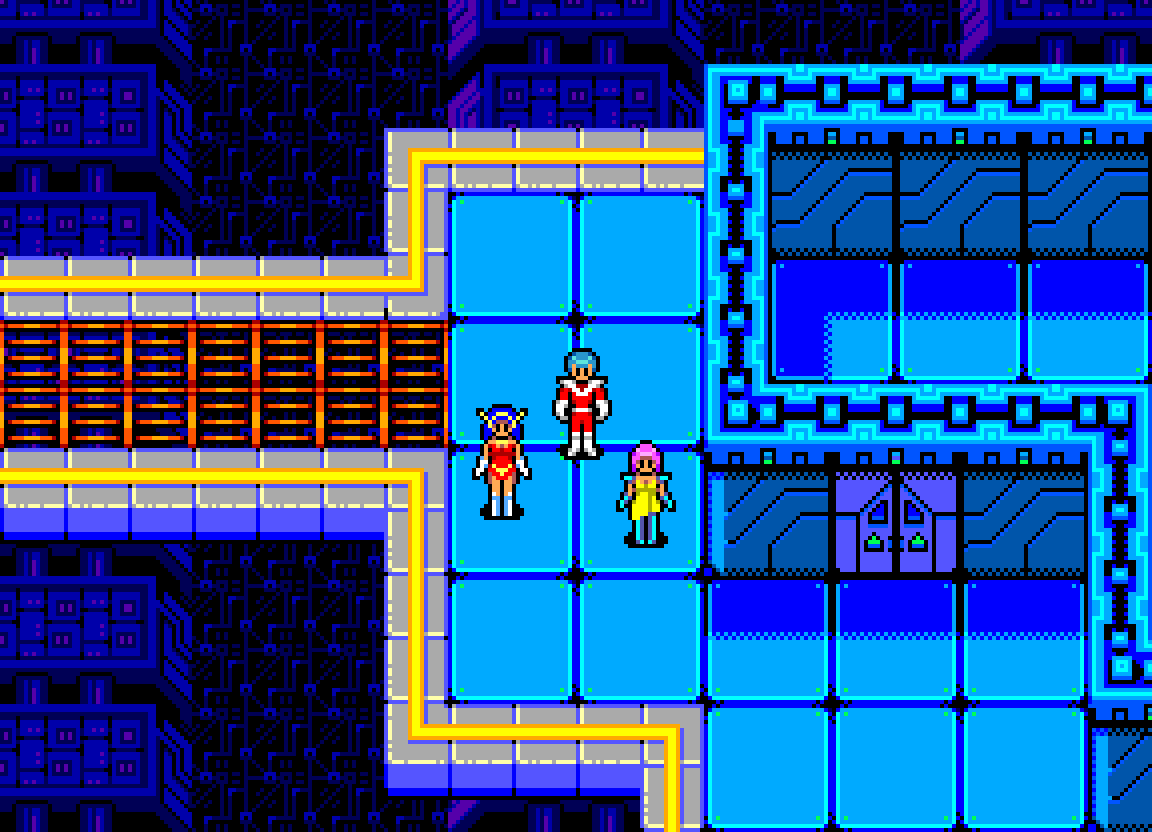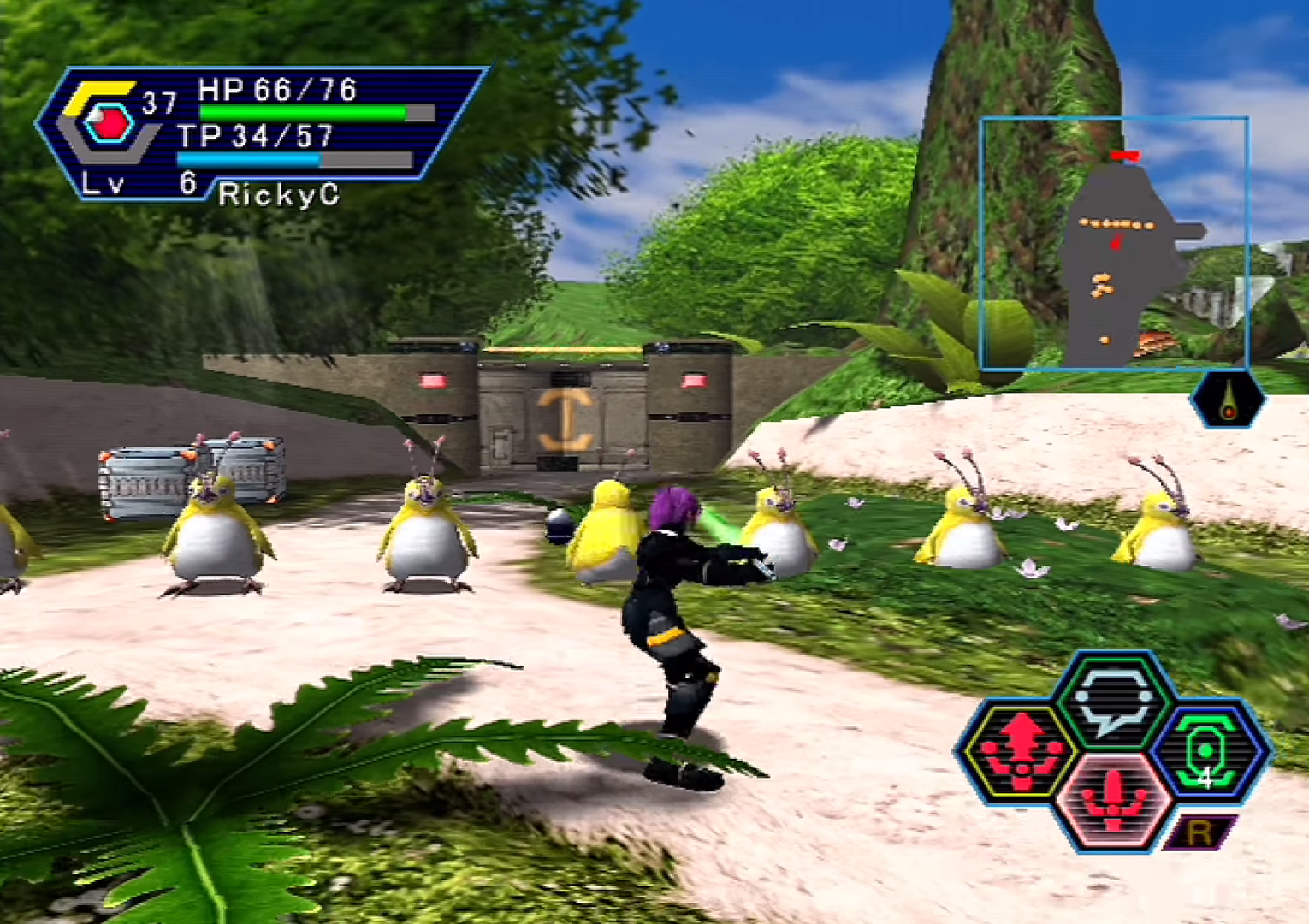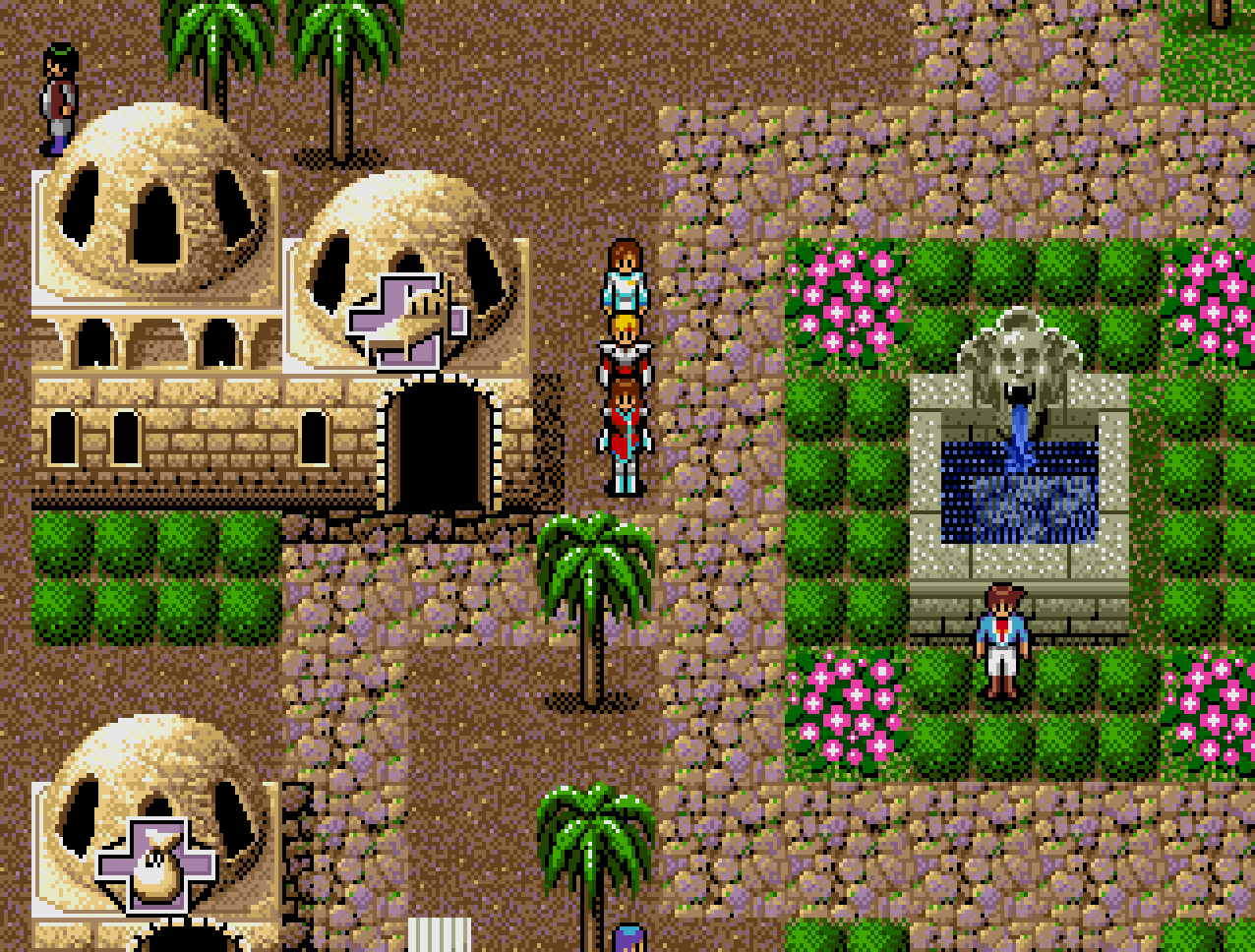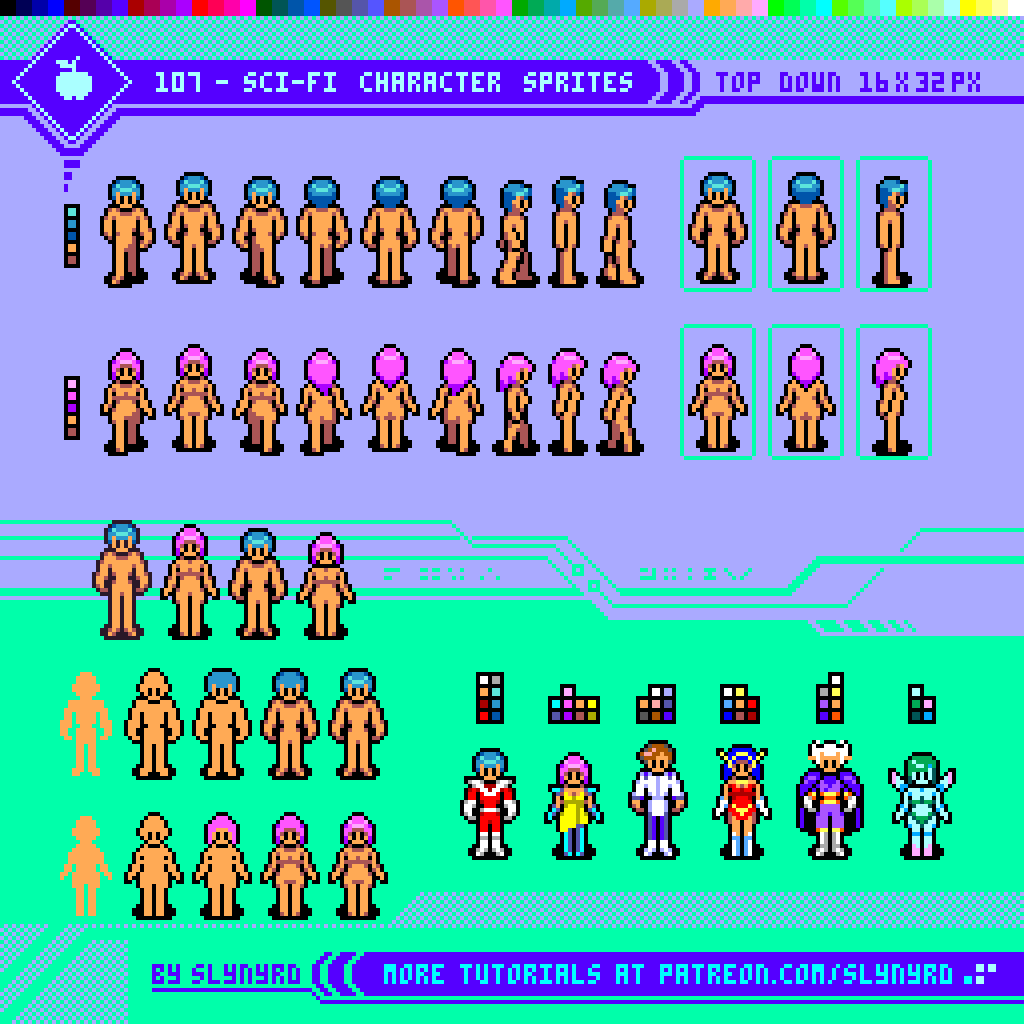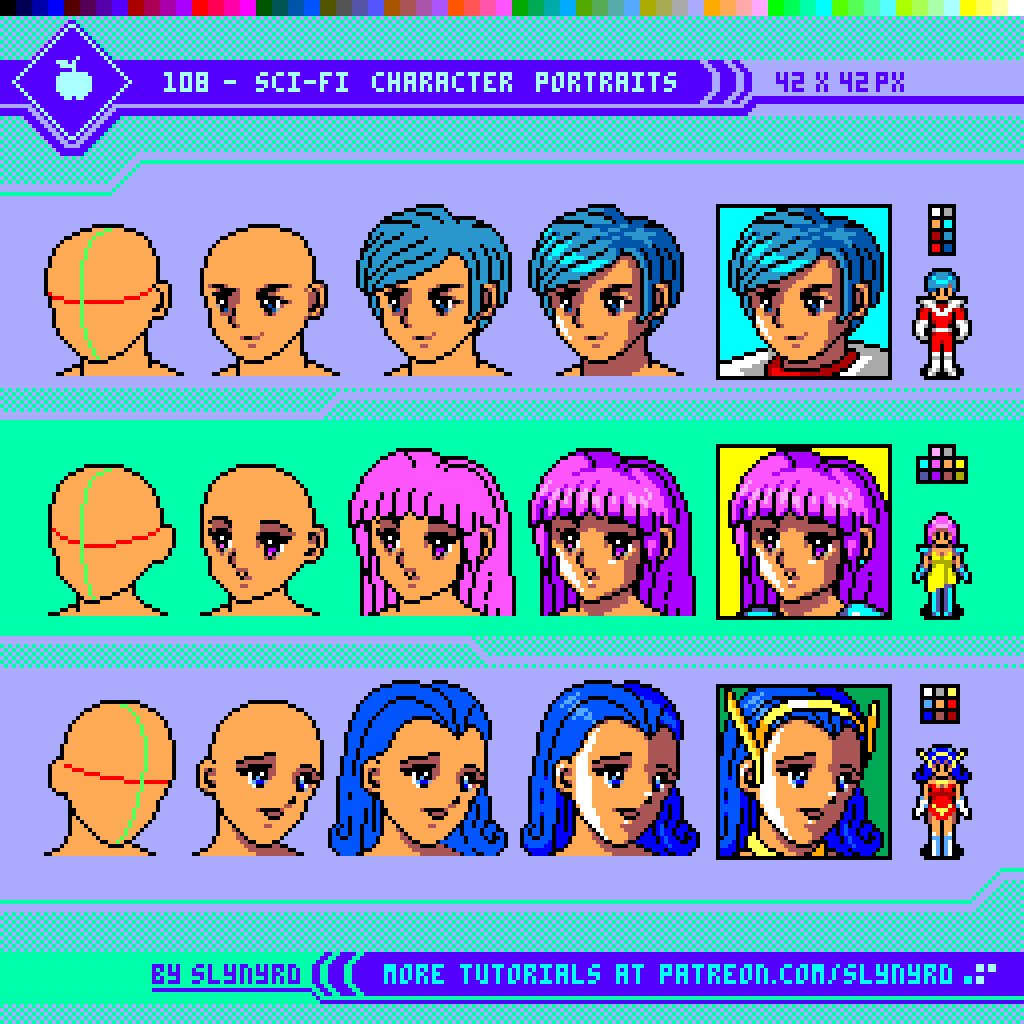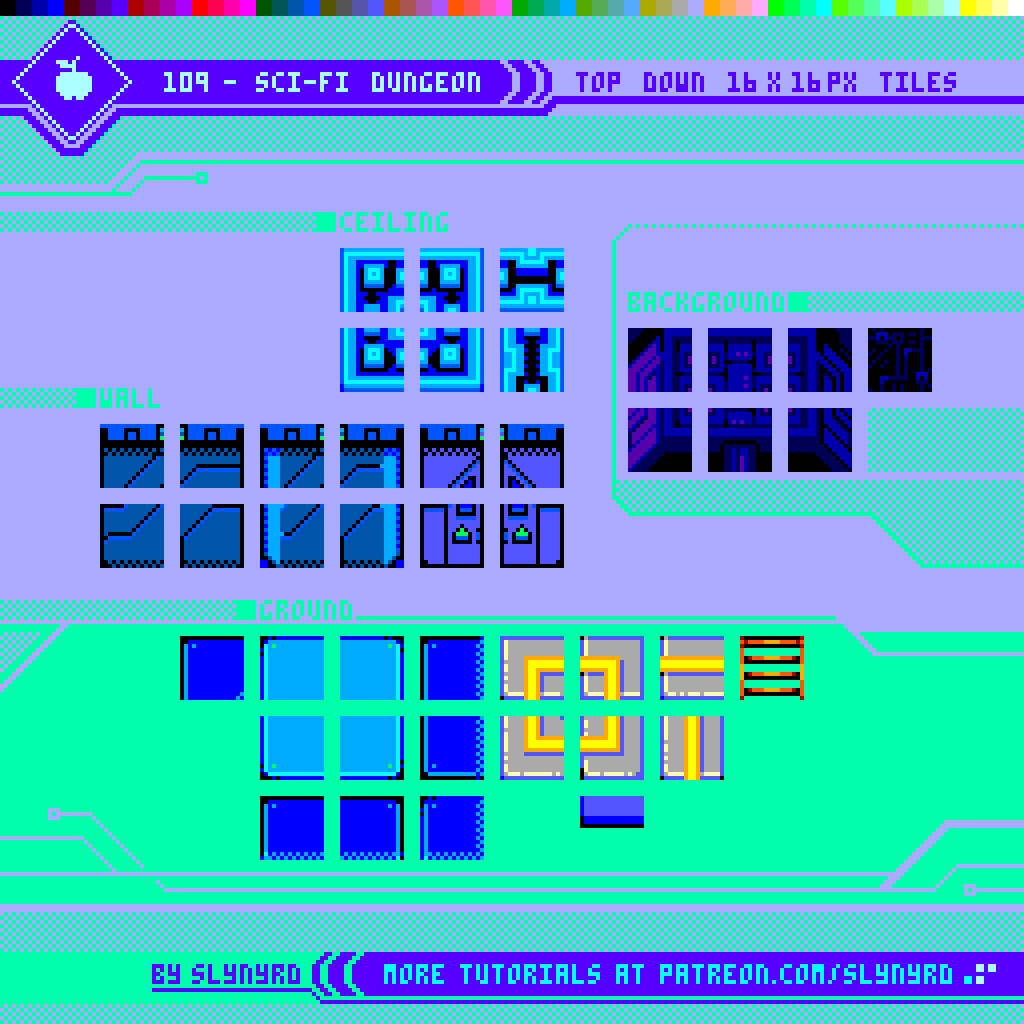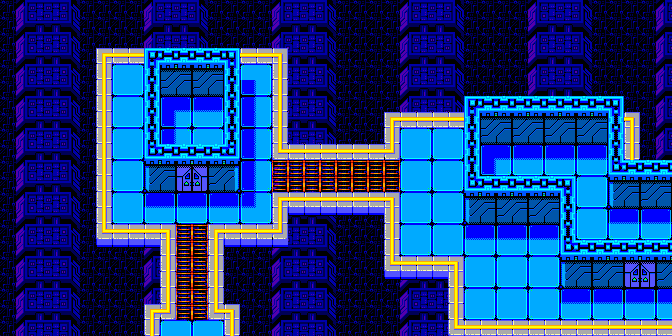Sci-fi RPG mockup, Slynyrd (2022)
Intro
Prepare to go back to the future, into a retro space age inspired by Sega’s venerable Phantasy Star franchise. It’s the early 1990’s, and every time I venture into the local rental store, the beautiful box art for Phantasy Star 2 captures my imagination. Alas, my family’s allegiance is with Nintendo, and my little child brain has yet to develop the patience for rpgs. Thus, the box went back onto the shelf, and the dream of an epic space themed adventure receded into distant memory. Fast forward to nearly a decade later- I’m at the height of a personal golden age of gaming during the all too short lifespan of the Dreamcast and its revolutionary SegaNet. Caught up in the 3D trend, I had yet to play any pixel art iterations of Phantasy Star. But, lo and behold, that captivating universe I gleaned from box art years ago, was finally making a return in online multiplayer form.
Phantasy Star Online would be my first foray into the PS universe, and man, was it a doozy. Upon popping in the disc, I played 13 hours straight until sunrise, when shamefully ordered to bed by my mom. I’ve never quite had a gaming binge like that since. Needless to say, it left an extraordinary impression. The gameplay was so simple, but the perfect synthesis of sound and visuals was, and still is hypnotic.
Phantasy Star Online, Sega Dreamcast (2000)
Surely my experience was not unique, as PSO and it’s various ports gave many gamers their first taste of Phantasy. Soon after its release, renewed interest in the 8 and 16-bit titles finally lead me to experience PS2 and 4, on authentic Genesis hardware, while years later I eventually sampled 1, and 3 through emulation. Even with the technical limitations, I was surprised to see consistent aesthetics throughout, each title being equally, if not more immersive than the modern 3D version I was accustomed to, albeit 3 slightly falls under par. Ultimately, PS4 is my favorite, and has the most refined graphics of the pixel art titles. Returning to the older generation gave me newfound appreciation and respect for pixel art. I was still caught up in the trends of the day, but I could sense an undeniable charm in these older games that my modern gaming diet was lacking. Roots were taking hold.
Phantasy Star 4, Sega Genesis (1993)
While my love for PSO is apparent, I’ve longed to see the franchise go back to the traditional turn-based random battle jrpg formula. After the greatness of PS4, there was so much potential for more main games within the genre. Unfortunately, the franchise was absent for 7 years until PSO, and has never returned to the traditional formula. But that can’t stop me from phantasizing about a return to retro form.
So with that long winded background story out of the way, I present a pixel art study heavily modeled after the stylings of PS4, and further informed by my experience with the series as a whole. While still exercising creative liberty, the following assets loosely adhere to Sega hardware somewhere between Master System and Genesis limitations, and are closely informed by the source material. Everything uses 6-bit RGB palette, and conforms to 16x16px tiles.
Character Sprites
With the sci-fi setting, alien and robot characters are common place, but it all starts with the base model humans. Once a few male and female variations are established it should be much easier to iterate for more diverse characters. Analyzing an existing sprite and stripping them down to their birthday suit is a great practice, and makes it much easier to iterate and visualize your own designs.
I’m always impressed with the 3-frame walk/run cycles of these old games. In this case, shading is essential for convincing effect. Idle is static, but you really don’t need motion with characters this vibrant! All 64 colors of the main palette can be see at the top of the tutorial.
For more tips on how to approach recreating retro inspired sprites, please review Pixelblog 37 Castlevania Study.
Character Profiles
Similar to the process with the character sprites, I referenced models from PS4, boiled them down to the basic head shape, then recreated them with my own styling. Shapes and placement of features are always important with anatomy, but simple shading and highlights are the key to creating depth.
Anatomy is like foreign language to me, if I don’t keep regular practice I quickly lose proficiency. The keys are to always use references, and with anything, persistence pays off. Try to see your efforts through to completion, as things looks out of sort until all features are well placed and proportioned. But don’t rush any steps! The basic head shape provides the foundation that will largely dictate the final outcome. If things look off in step 1, they will likely be off in the final step. Yet, there’s always room for adjustments along the way. Insight is best gained by going through the motions. In other words, practice! For more tips and tutorials on anime styled portraits, check out Pixelblog 29 Anime Faces and Hair.
Dungeon Tiles
Ah, this cybernetic aesthetic suites the pixels well. Each individual tile is quite simple, but everything comes together in striking fashion. Again, I studied references from PS4 dungeons to inspire the design. The few extra tiles for the baked in shadows is well worth the added depth. The combination of large 32x32px panels along with the standard 16x16px blocks helps break the monotony of the grid. Also the color contrast and different floor textures keeps things interesting. But, the coolest aspect is the parallax background. All done with minimal assets!
Made with Pyxel Edit. If you’re new to making top-down tiles, I suggest reviewing the fundamentals in Pixelblog 20 Top Down Tiles.
Let the monster blood splash across those shiny tiles.
FINAL THOUGHTS
This study hit a personal sweet spot. Listening to the PSO soundtrack as I developed these tutorials had me gushing with nostalgia and kept the inspiration on high. The 6-bit RGB palette was surprisingly fun the work with and feels slightly more versatile than the NES palette. While I’m grateful for the games we got from the era, I can’t help feeling bittersweet that we didn’t get more pixel art space themed rpgs. Maybe these tutorials will inspire someone to make one! How about a part 2 follow up, focusing on the battle system? Always more to come!
RESOURCES
Please consider supporting my work by becoming a Patron. Among many other rewards, Patrons can access resources to compliment my tutorials. But most importantly, you allow me to continue making new content!
Alternatively, you can support me by making a one-time donation
Assets featured in this Pixelblog are available in Sci-fi RPG Asset Pack
Source file used in the making of this PIxelblog are available in Sci-fi RPG Source Files
Get caught up on all my downloads
You made it to the end of the article. Thank you for reading!
-By Raymond Schlitter
